 by our College Data Analytics Team
by our College Data Analytics TeamCSU total enrollment is approximately 768 students. 335 are undergraduates and 175 are graduate students.
Male/Female Breakdown of Undergraduates
The full-time CSU undergraduate population is made up of 51% women, and 49% men.
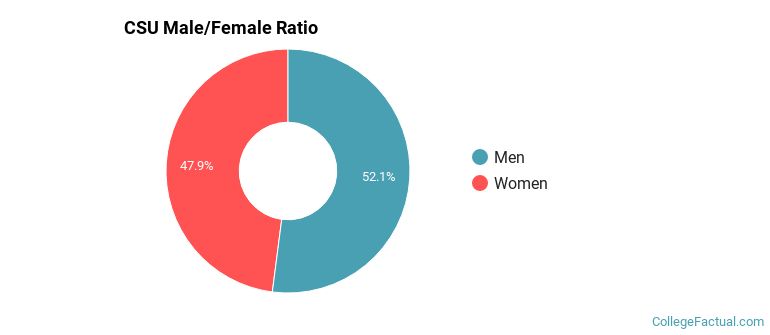
For the gender breakdown for all students, go here.
CSU Racial/Ethnic Breakdown of Undergraduates
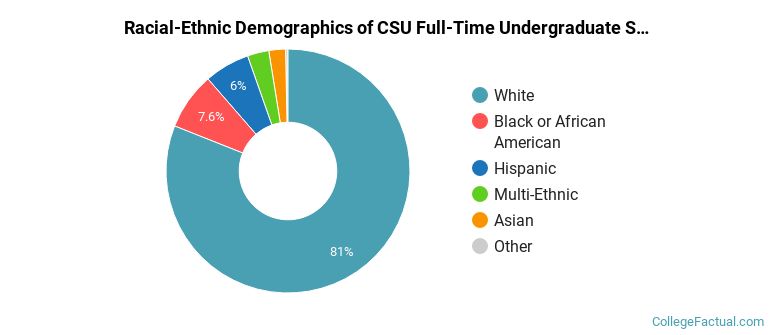
| Race/Ethnicity | Number |
|---|---|
| White | 270 |
| Hispanic | 24 |
| Black or African American | 22 |
| Multi-Ethnic | 6 |
| Asian | 5 |
| International | 5 |
| Native Hawaiian or Pacific Islander | 0 |
| Unknown | 0 |
See racial/ethnic breakdown for all students.
Male/Female Breakdown of Graduate Students
About 37% of full-time grad students are women, and 63% men.
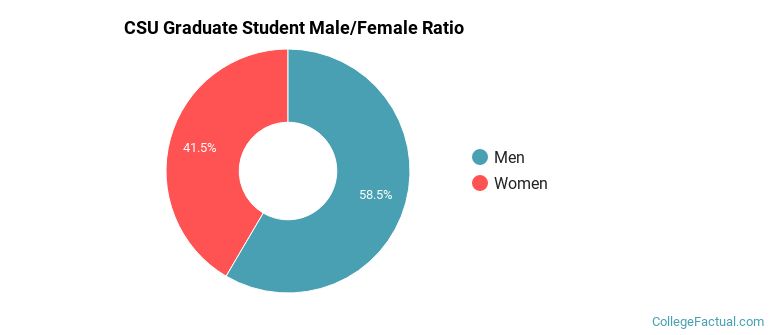
For the gender breakdown for all students, go here.
CSU Racial-Ethnic Breakdown of Graduate Students
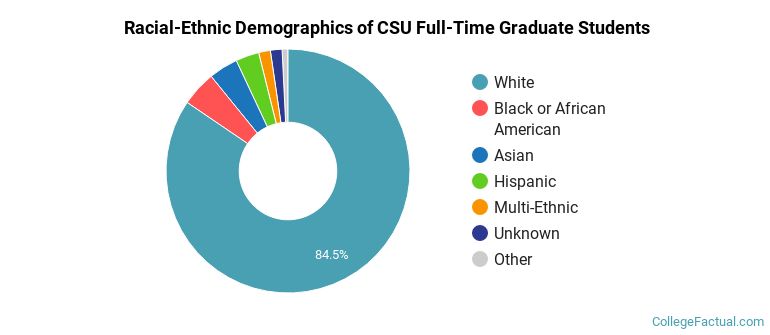
| Race/Ethnicity | Number |
|---|---|
| White | 140 |
| Black or African American | 13 |
| Hispanic | 7 |
| Multi-Ethnic | 7 |
| Asian | 5 |
| International | 2 |
| Unknown | 1 |
| Native Hawaiian or Pacific Islander | 0 |
See racial/ethnic breakdown for all students.
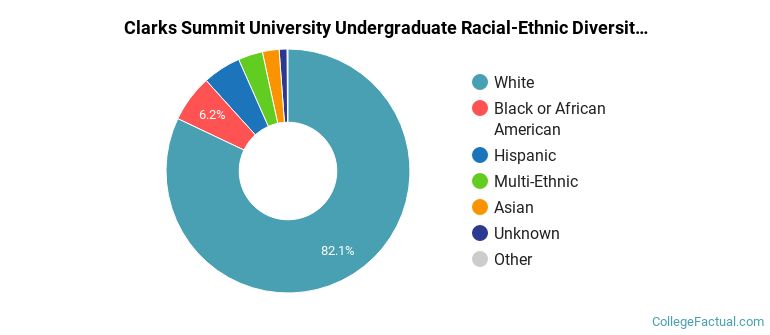
| Race/Ethnicity | Number |
|---|---|
| White | 625 |
| Black or African American | 45 |
| Hispanic | 43 |
| Multi-Ethnic | 22 |
| Asian | 15 |
| International | 9 |
| Unknown | 5 |
| Native Hawaiian or Pacific Islander | 0 |
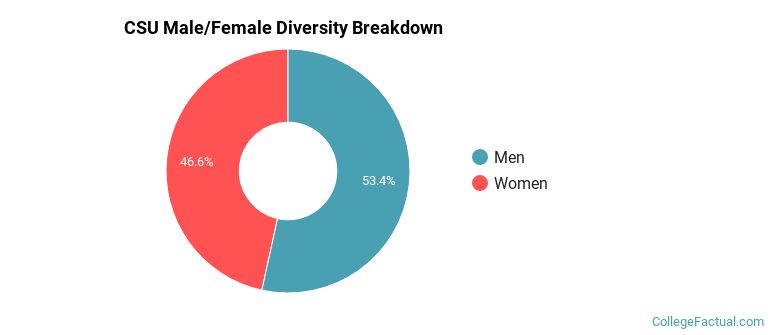
There are approximately 347 female students and 421 male students at CSU.
CSU ranks 550 out of 2,183 when it comes to geographic diversity.
56.82% of CSU students come from out of state, and 2.22% come from out of the country.
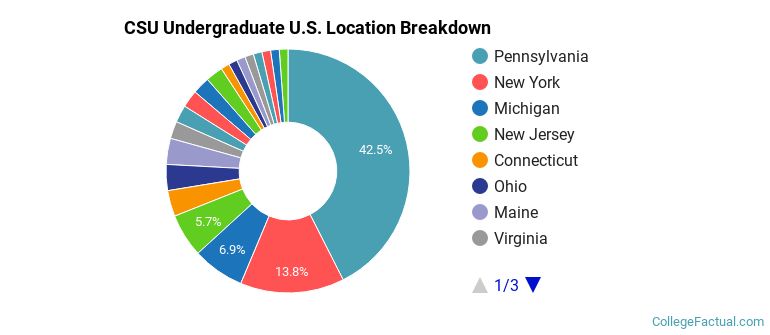
The undergraduate student body is split among 20 states (may include Washington D.C.). Click on the map for more detail.
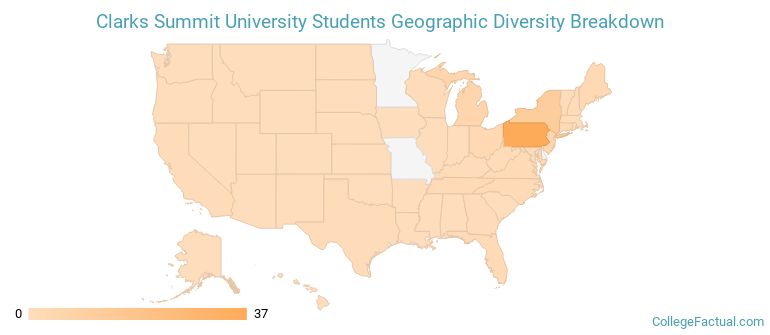
| State | Amount |
|---|---|
| Pennsylvania | 37 |
| New York | 12 |
| Michigan | 6 |
| New Jersey | 5 |
| Connecticut | 3 |
Students from 11 countries are represented at this school, with the majority of the international students coming from Canada, Bahamas, and Brazil.
Learn more about international students at CSU.
A traditional college student is defined as being between the ages of 18-21. At CSU, 36.98% of students fall into that category, compared to the national average of 60%.
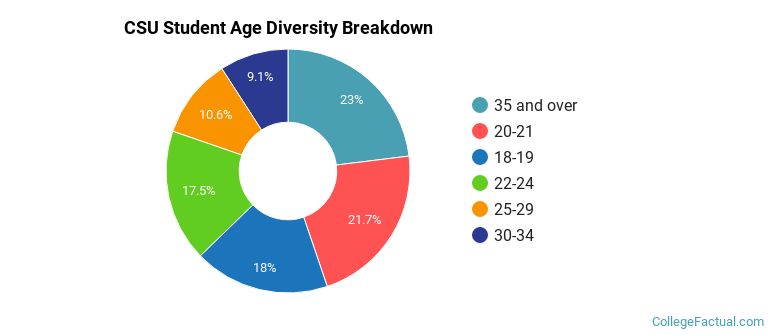
| Student Age Group | Amount |
|---|---|
| 35 and over | 159 |
| 20-21 | 150 |
| 18-19 | 124 |
| 22-24 | 121 |
| 25-29 | 73 |
| 30-34 | 63 |
| Under 18 | 0 |
Footnotes
*The racial-ethnic minorities count is calculated by taking the total number of students and subtracting white students, international students, and students whose race/ethnicity was unknown. This number is then divided by the total number of students at the school to obtain the racial-ethnic minorities percentage.
References
Department of Homeland Security Citizenship and Immigration Services
Learn more about how College Factual creates their Diversity Rankings.